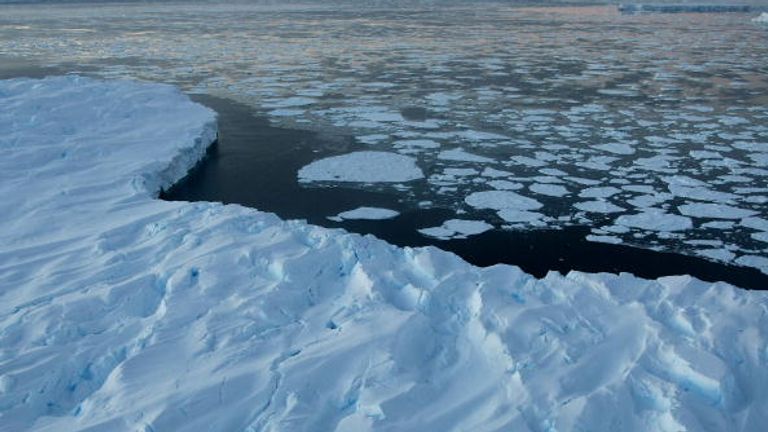Ice sheets in Greenland and Antarctica are melting at a rate which matches the worst-case scenario for sea level rises, according to a new study.
The vast majority of the planet’s ice mass is contained in the Antarctic ice sheet, which would cause sea levels to rise by 58 metres if it melted completely.
The much smaller Greenland ice sheet, which previous research suggests may have melted beyond the point of return, would cause a rise of just over seven metres.
While a complete melt isn’t expected, even small increases could have a devastating effect and new research says that global sea levels have already risen by 1.8cm since the 1990s – matching the worst-case scenario developed by the Intergovernmental Panel on Climate Change.
Global sea levels are primarily rising through something known as thermal expansion, which means the volume of seawater is expanding as it gets warmer.
But in the past five years, ice melting from land-based ice sheets and mountain glaciers have overtaken thermal expansion as the main cause of rising sea levels by adding additional water volume to the oceans.
A new study by scientists at the University of Leeds and the Danish Meteorological Institute warns that if this melting rate continues, global sea levels could rise by another 17cm by the end of this century – exposing 16 million people to coastal flooding on an annual basis.
Satellites began monitoring the ice sheets in the 1990s, since when the Antarctic melting has driven a sea level rise of 7.2mm, while melting of the Greenland ice sheet has increased it by more than 1cm.
Dr Tom Slater, lead author of the study and climate researcher at the Centre for Polar Observation and Modelling at the University of Leeds, said humanity risked “being unprepared” for the rate at which the sea level could rise.
“Although we anticipated the ice sheets would lose increasing amounts of ice in response to the warming of the oceans and atmosphere, the rate at which they are melting has accelerated faster than we could have imagined,” said Dr Slater.
“The melting is overtaking the climate models we use to guide us, and we are in danger of being unprepared for the risks posed by sea level rise.”
Dr Anna Hogg, a study co-author and climate researcher in the School of Earth and Environment at Leeds, said: “If ice sheet losses continue to track our worst-case climate warming scenarios, we should expect an additional 17cm of sea level rise from the ice sheets alone.
“That’s enough to double the frequency of storm-surge flooding in many of the world’s largest coastal cities.”
Dr Ruth Mottram, another co-author and climate researcher at the Danish Meteorological Institute, added: “It is not only Antarctica and Greenland that are causing the water to rise.
“In recent years, thousands of smaller glaciers have begun to melt or disappear altogether, as we saw with the glacier OK in Iceland, which was declared ‘dead’ in 2014. This means that melting of ice has now taken over as the main contributor of sea level rise.”
The study, comparing satellite surveys with calculations from climate models, is published in the journal Nature Climate Change.


